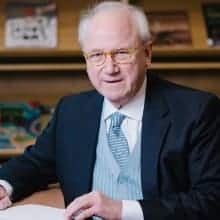A weekend burst of spring cleaning unearthed a dusty box containing editorial-page columns that I wrote in 1993-94, my last two years as a regular columnist for The News & Observer. A headline on December 16, 1994, caught my eye — “Semantics of division’ threaten N.C. schools.“ Especially that phrase “semantics of division.”
My column dealt with a briefing paper issued by the Public School Forum of North Carolina, examining an especially bitter, community-fracturing clash in Gaston County between education-reform advocates and religious-right activists. The late Bill Friday, the former UNC president, had collaborated with the Forum to learn lessons from that episode of civic hostility in the county where he grew up.
“Separating the false claims, unfair charges, semantics of division and semantics of reform from the central issue – how to make schools better – is a daunting task,”
said the briefing paper. “Yet responsible people everywhere must shoulder it if schools in North Carolina and the nation are to become second to none.”
While I can think no recent flare-up of the sort that ripped through Gaston County 20 years ago, it strikes me that today’s great debate about the future of preK-12 public education still features “semantics of division and semantics of reform.”
We use words that obscure, that exaggerate, that create dissonance.
Public school administrators and advocates often leave parents and the public numbed with the glib use of insider jargon and acronyms. The state Board of Education has a “task force on summative assessments.” Its recent agenda devoted a half hour to “accountability pilot – performance assessment of competency education (PACE).”
The definitions of “summative assessment’’ and “competency education” don’t easily come to my mind. Outside of those fluent in education-ese,
It’s no wonder people often feel left out of the conversation, or subjected to what seem bureaucratic decisions disconnected from real life.
Even worse, in my view, are citizens who blithely, and in sweeping generalities, pronounce public education broken or a failure. Reality, of course, is much more complex, nuanced, a mixture of success and distress.
No one who saw “Miss Saigon’’ at Enloe High School, who heard a New Orleans-style jazz performed by Leesville High students, or who attended a performance of “Thoroughly Modern Millie’’ by Martin Middle School students walked away with a sense that our public schools are failing. Every day I’m on campus in Chapel Hill, I see – and teach – students well prepared by their public schools and succeeding at higher education.
And yet, we know that North Carolina has hundreds of high schools and middle schools in rural communities and small counties that cannot muster the resources and produce the array of educational offerings of an Enloe, Leesville, or Martin Middle in Wake County. We know that achievement gaps persist between and among white, black, and Latino students. We know that international measurements have shown U.S. students, as a whole, scoring below economic-competitor nations.
Many North Carolinians have voted with their feet, as it were, by shifting their children into charter schools, private schools, or homeschools. Some seek an environment appropriate for their own child’s development; some act out of religious conviction.
Parents doing what’s best for their children deserve respect.
Still, what deeply troubles public school supporters these days is the emergence of political forces and policymakers who appear to regard education only as a private good rather than also as a community-building and democracy-enhancing asset. A bright fault line in the great education debate falls along the public v. private divide.
Thomas Jefferson, who founded a public university, spoke and wrote regularly about the importance of education in forging a nation. The Economist of Britain recently began an article with an observation from the nation’s third president: “In his proposal for reforming the curriculum at William and Mary College, Thomas Jefferson wrote that it should nurture ‘those talents which nature has sown as liberally among the poor as the rich, but which perish without use, if not sought for and cultivated.’”
“…how to make schools better.”
For most North Carolina young people, our traditional public schools will remain the primary educational pipeline to a college or a university or life beyond. Every graduate of a charter school, private school, and homeschool will enter a society mostly populated by people who have attended traditional public schools. As knowledge expands, the economy changes, and our population shifts, public schools will always face challenges of keeping up and coping. The central issue remains, as the Public School Forum’s 1994 briefing paper put it, “how to make schools better.”



